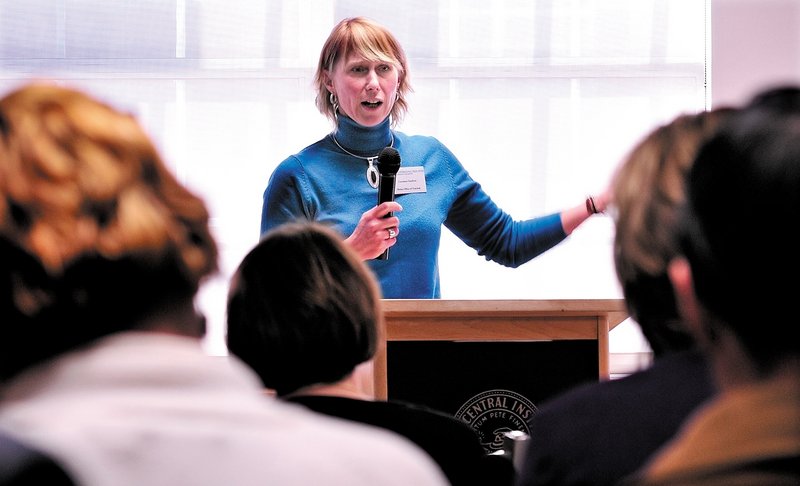PITTSFIELD – Carolann Ouellette stood before the audience and talked about how prospective visitors to Maine need to see more than just the state’s classic images and messages.
The state’s most recent tourism slogan is, after all, “There’s More to Maine.”
And yet, on a slideshow behind Ouellette were three thumbnail images: a coastal lighthouse, a cooked lobster and a moose standing in water.
“If anything, it’s a hook, what gets people interested,” said Ouellette, deputy director of the Maine Office of Tourism. “We’ve used lobster and lighthouses for years, and it gets their attention. There’s also outdoor adventures, trails, biathlons, whitewater rafting and the intrigue to our wilderness areas. It boils down to the natural scenery.”
That balance — hanging on to Maine’s iconic attractions while finding new ways of drawing visitors — is being discussed by more than just tourism officials.
Ouellette’s comments came Thursday during a forum at Maine Central Institute, where several speakers addressed about 50 people on the best practices for marketing Maine to international students.
MCI, an independent town academy, is the public high school for the Pittsfield area and attracts many tuition-paying students from other countries.
The speakers, including Ouellette, shared thoughts about “what sells” and “what doesn’t” as an audience of mostly officials from Maine’s town academies and colleges pondered how to reach out to international markets, using new messages and new technology.
Beyond lighthouses, lobster and moose, Ouellette said, her office aims to market the state’s many attractions, such as Acadia National Park, fall foliage, outdoors activities and winter sports, history and heritage, the arts, and culinary scenes. It’s about conveying a complete sense of place, she said.
Abby Swardlick, Dave Page and Melvin Harmon of Maine’s Council on International Educational Exchange in Portland discussed how they reach college and high school students in overseas markets, and how those efforts could bring such students to Maine.
The council, which has offices and personnel across the globe, offers several programs that enable young people from other countries to come here on visas to work and receive an education.
“Have any one of you stopped at the Kennebunk rest stop?” Swardlick said, referring to the Maine Turnpike. “If you hear somebody working there with a Russian accent, it’s very likely someone with us.”
Harmon said it’s critical to potential high school and college students to see primarily photos and video to get a “feeling for the experience they could have.” And the social-networking site Facebook appears to have surpassed search-engine behemoth Google when it comes to young people searching for schools, because they’re also looking for the impressions of their peers, not just search results.
Even for schools looking to recruit internationally, Harmon said, the best marketing tool now is showing people “what it’s like” to be somewhere and showing real people enjoying themselves in that setting.
“You need to promote the fun-factor even though it’s education,” Harmon said.
Send questions/comments to the editors.



Success. Please wait for the page to reload. If the page does not reload within 5 seconds, please refresh the page.
Enter your email and password to access comments.
Hi, to comment on stories you must . This profile is in addition to your subscription and website login.
Already have a commenting profile? .
Invalid username/password.
Please check your email to confirm and complete your registration.
Only subscribers are eligible to post comments. Please subscribe or login first for digital access. Here’s why.
Use the form below to reset your password. When you've submitted your account email, we will send an email with a reset code.